Gardening is an exciting hobby that can bring joy and beauty to any home. One essential element of gardening is using planters, which come in different materials such as plastic, metal, wood, and clay. Choosing the right planter material ensures your plants thrive in their environment. Each material has pros and cons regarding durability, water retention ability, insulation properties, drainage capacity, weight, and aesthetic appeal. When choosing the perfect planter material for your garden, there are a few factors that you need to consider.
When selecting a planter material, consider factors like climate conditions in your area or how often you water your plants. For example, live in a hot or dry region where plants need more frequent watering than usual due to high evaporation rates. Choosing materials like plastic might be ideal because they retain moisture well. Ultimately, finding the best planter material depends on your needs, such as budget constraints or personal preferences like design choices.
Best Planter Materials to Use Indoors or Outdoors
Terracotta
Terracotta is a type of clay used for centuries in pottery and garden planter manufacturing. Its reddish-brown color, porous texture, and rustic appearance characterize it. Many garden enthusiasts love Terracotta planters because they are affordable, readily available, and have excellent drainage properties. The material’s porous nature allows air to circulate the roots of plants, preventing waterlogging and root rot. However, it’s worth noting that Terracotta can crack or break if exposed to extreme temperature changes or heavy impacts.
In case you missed it: How to Select Planting Materials for Your Garden: A Beginners Guide
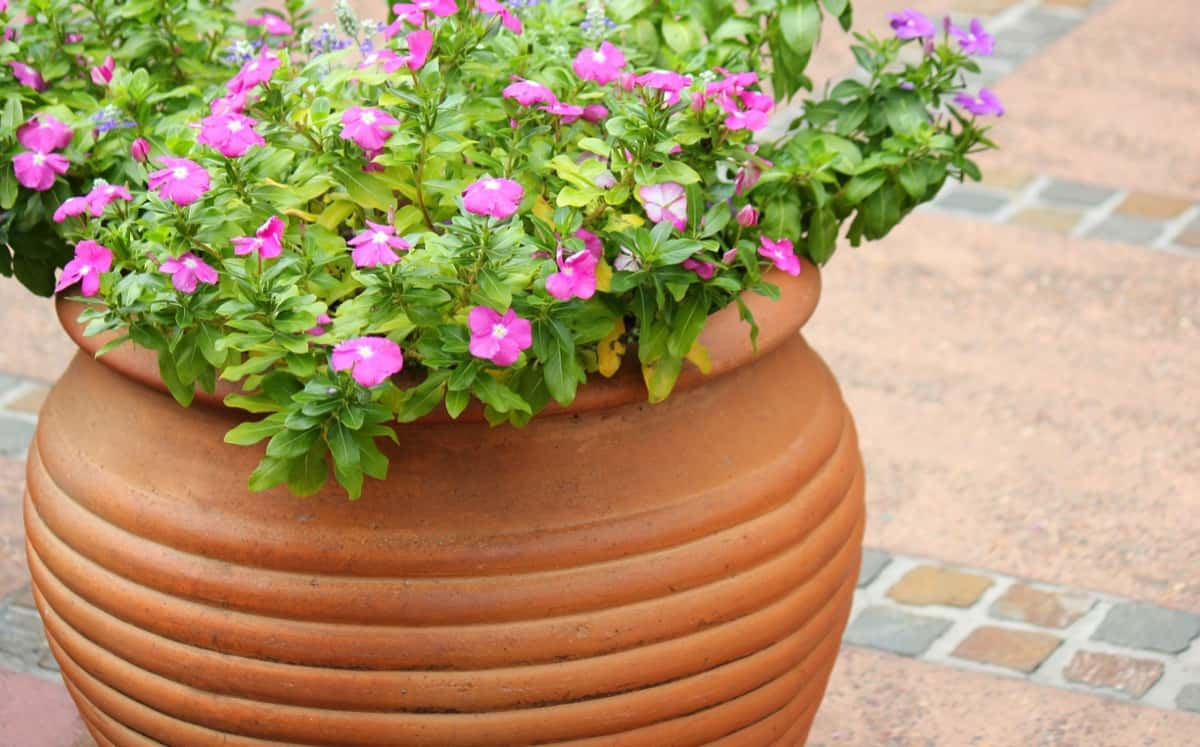
For this reason, it’s essential to bring them indoors during harsh winters or cover them with protective materials such as burlap sacks. Due to hard water usage, terracotta pots can also develop mineral deposits on their surface over time. This buildup can be removed using vinegar or a mixture of baking soda and water. Terracotta planters are attractive for those seeking a natural look while maintaining practicality without breaking the bank.
Plastic
Plastic garden planters are some of the most affordable and lightweight options available. They are available in various colors, sizes, and shapes to suit any gardening needs. One significant advantage of plastic planters is their durability. Another benefit is how easy it is to move them around since they are lightweight. This makes it easier for gardeners who want to switch up their planting arrangement regularly or those who need to move plants from one garden area to another.
In case you missed it: How to Make Biodegradable Peat Moss Planters and Pots: For Your Garden Plants
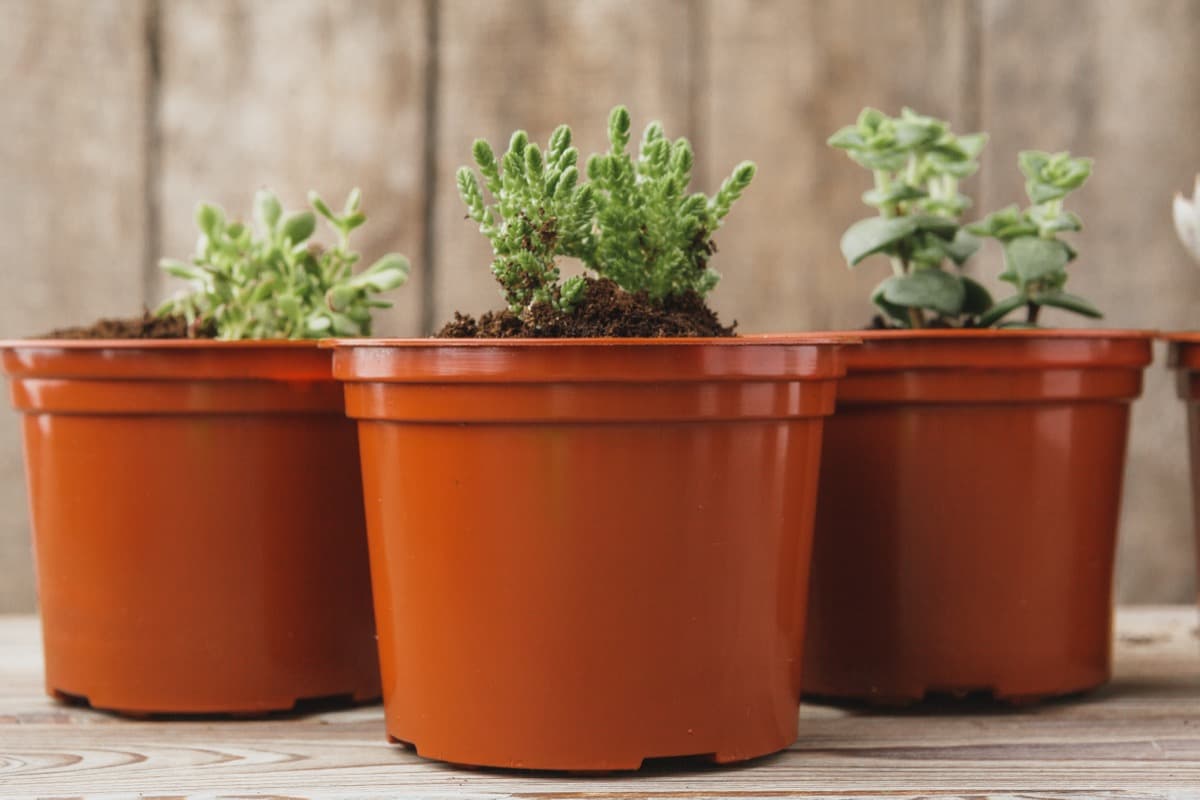
Plastic pots also have excellent water retention properties compared to clay planters which tend to dry out faster. Moreover, they do not absorb soil moisture, meaning less watering frequency than other materials. Plastic pots require very little maintenance and cleaning; wipe them down with a damp cloth when you notice dirt build up on them.
Wood
Wooden garden planters have been around for centuries and are popular among enthusiasts. Wood adds warmth and character to any outdoor space, making it the best choice for those who want to create an inviting ambiance in their gardens. One of the advantages of wooden planters is their versatility. Another advantage of wooden planters is their durability. When properly treated with a sealant or weather-resistant paint, they can last for many years without rotting or warping.
In case you missed it: Best Ferns for Hanging Baskets: Types of Ferns to Grow in Hanging Planters
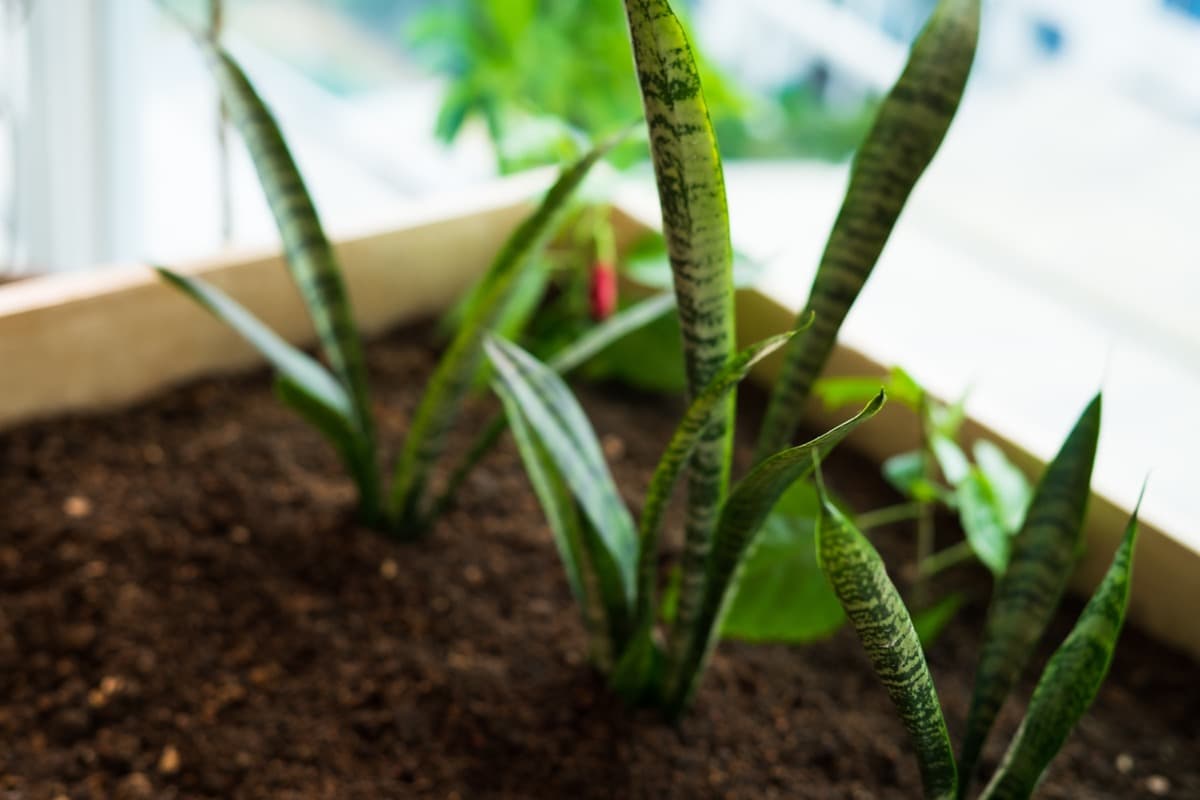
Wooden planters are also relatively lightweight compared to other materials like concrete or stone but sturdy enough to withstand harsh weather conditions. When choosing a wooden planter box, ensure it has drainage holes at the bottom. You should also consider lining the inside with plastic sheeting before adding soil and plants to protect the wood from moisture damage. With proper care, they provide years of enjoyment while adding natural beauty to your surroundings.
Hypertufa
Hypertufa is a unique and versatile material becoming increasingly popular among gardeners. One advantage of hypertufa planters is their porous nature, which allows for excellent drainage and prevents waterlogging in plants. Additionally, hypertufa can be molded into any shape or size the gardener desires, making it highly customizable to fit specific gardening needs.
Another benefit of using hypertufa planters is their ability to withstand extreme weather conditions. Hypertufa remains unaffected, unlike other materials such as Terracotta or glazed ceramic that may crack under freezing temperatures. Hypertufa offers endless possibilities for creating beautiful and functional planters with its versatility in design options while being environmentally friendly at the same time.
Metal
Metal garden planters are a popular choice for their durability and sleek appearance. They can withstand harsh weather, making them ideal for outdoor use. Metal pots come in various shapes, sizes, and styles to suit any garden design. One of the most common metals used for gardening purposes is galvanized steel. This material is rust-resistant and provides excellent drainage for plants. Its silver color adds an elegant touch to modern garden designs.
In case you missed it: Garlic Growing Stages: A Complete Step-By-Step Guide
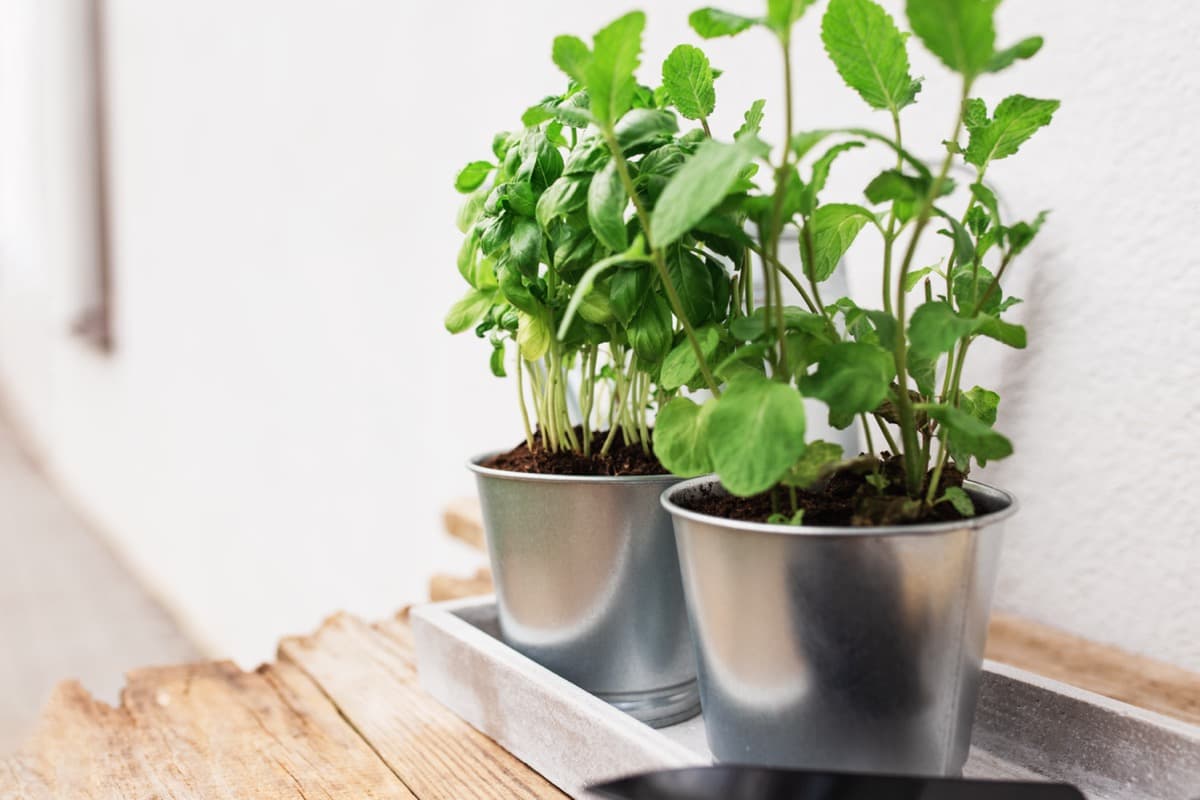
Another metal commonly used in garden planters is aluminium. It’s lightweight yet strong enough to hold up against the elements. Aluminium planters typically have a glossy finish that reflects light beautifully. Metal garden planters are perfect if you’re looking for long-lasting durability with a touch of modern elegance or rustic charm, depending on the type of metal chosen.
Polystyrene Foam
Polystyrene Foam is a synthetic material that has become increasingly popular as a planter material in recent years. This lightweight and durable foam can be shaped into various designs, making it an excellent choice for those looking to add creativity to their gardens. One of the most significant advantages of Polystyrene Foam is its insulating properties. It helps keep plant roots cool during hot weather, which prevents soil from drying out too quickly.
It also protects plants from cold temperatures by maintaining the temperature inside the container. Another advantage of Polystyrene Foam is that it requires very little maintenance. Unlike other materials, such as wood or concrete, this type of foam won’t rot or crack due to exposure to weather conditions.
Therefore, gardeners don’t have to worry about replacing their planters frequently. Furthermore, Polystyrene Foam can be painted easily with any color scheme you choose for your garden decor needs. The endless possibilities for adding unique styles and patterns to your polystyrene foam planter. Polystyrene Foam may not be ideal for all plants (such as those requiring heavy watering), but it has many benefits.
Glazed Ceramic
Glazed ceramic planters are a popular choice for both indoor and outdoor gardens. One advantage of glazed ceramic planters is that they come in various colors and designs, giving you plenty of options when choosing your style best. They also retain moisture well, which makes it easier to maintain healthy plants as they need less frequent watering. However, glazed ceramic can be fragile compared to other planter materials such as plastic or metal.
In case you missed it: Secret Tips to Create the Most Fragrant/Aromatic Herb Garden
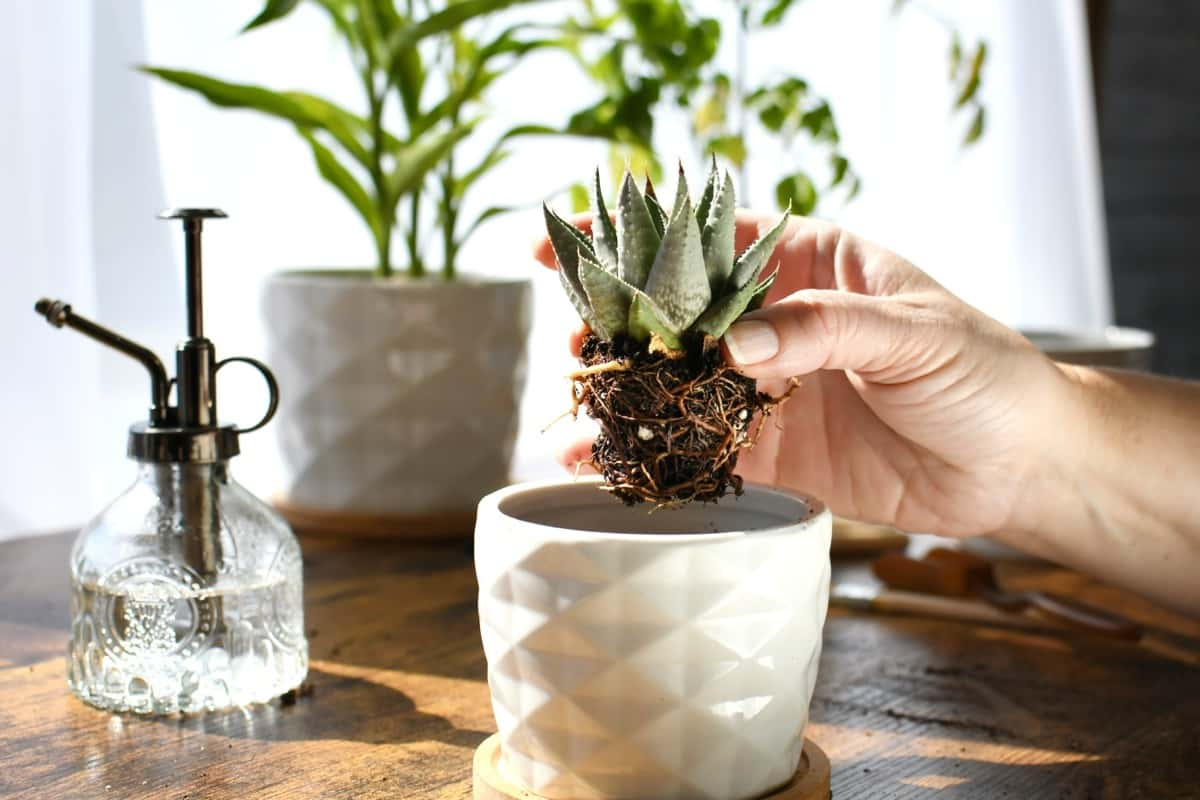
If dropped or knocked over, the planter could break easily. Another downside is that, unlike porous materials like Terracotta or hypertufa, glazed ceramic does not allow air circulation into the soil. When selecting a glazed ceramic planter for your garden, ensure its size will fit your plants’ needs- if too small or too large, the required size may affect their growth negatively. Taking care not only when handling but also with regular cleaning can make this material last longer while adding beauty and character to your little green space.
Moss and Coconut Fiber
Moss and coconut fiber are unique planter materials that offer a natural look to your garden. Moss is a living material that grows on rocks, trees, and even soil. When used as a planter material, moss gives the planters an organic appearance and feel. Coconut fiber or coir comes from the outer husk of coconuts. This fibrous material is widely used in gardening for its water retention properties while remaining airy enough for proper drainage. Coconut fibers are often mixed with soil or other potting mixtures to enhance their ability to hold moisture.
When combined, moss and coconut fiber create a perfect blend of natural materials, providing excellent water retention and plant drainage capacities. The combination also offers enhanced root growth due to the porous nature of both materials. In addition, using moss with coconut fiber helps keep pests away from your plants naturally without resorting to harmful chemicals; this makes it an ideal choice for organic gardening enthusiasts.
Concrete
Concrete is a popular material for garden planters due to its durability and sturdiness. It can withstand harsh weather, making it an excellent choice for outdoor use. One of the best things about concrete planters is their versatility in terms of design. From sleek and modern designs to intricate ornamental patterns, there’s a concrete planter that will suit your taste.
Another advantage of using concrete as a planter material is its weight, making it difficult to topple when filled with soil and plants. However, this also means they are not easily movable once placed in your desired location. Choosing high-quality concrete planters properly sealed against moisture damage is important to ensure longevity. Consider choosing concrete if you’re looking for sturdy yet stylish garden planters requiring minimal maintenance.
In case you missed it: How to Take Care of Seedlings After They Sprout: A Beginners Guide

Tips for Planting in Each Type of Planter
Planting in different types of planters requires specific considerations to ensure optimal growth and health for your plants. For clay or Terracotta planters, it is important to soak the pot in water before planting. This prevents the pot from absorbing all the moisture from the soil, which can lead to dryness and root damage. Also, choose plants that prefer well-drained soil, as clay pots tend to retain moisture.
When planting in plastic containers, ensure drainage holes are at the bottom. Plastic retains more moisture than other materials, so it’s important not to overwater your plants. Use a lightweight soil mixture that drains easily, and avoid placing these containers under direct sunlight, as they can heat up quickly.
Wooden planters require liners such as plastic or metal inserts because wood absorbs water, leading to rotting if not properly protected. Choose wood stains or paints free from harmful chemicals that may leach into the soil and harm your plants. It’s also best practice to use riser pads to elevate wooden planters off damp surfaces such as grass or concrete.
Metal garden pots conduct heat rapidly, leading them to become too hot during warm seasons, potentially harming root systems within container gardens, especially those located on decks where reflected heat intensifies problems like this even further. To combat this issue, use light-colored paint on exterior surfaces of metallic-mixed materials like aluminium and reflective mulching products around base areas when watering vegetation in these environments.
Conclusion
After considering the various materials available for garden planters and assessing their advantages and disadvantages, it’s clear that each material has unique characteristics. Ultimately, the best planter material for you will depend on your specific needs and preferences. Plastic or fiberglass is a good choice for a lightweight, affordable option that still looks great.
Concrete or stone planters may be perfect if you invest more money in durable pots with an elegant appearance. Metal containers provide an industrial aesthetic but have the potential to rust over time if not correctly maintained. When choosing a planter material, consider factors such as durability, cost-effectiveness, aesthetic appeal, and ease of maintenance before making your final decision.
- How to Grow Tomatoes Organically at Home: A Comprehensive Guide
- Organic Gardening on a Budget: Low-Cost Methods and Materials
- Gongura Seed Germination and Planting Methods
- Cabbage Seed Germination and Selection
- Broccoli Seed Germination and Selection
- Asparagus Seed Germination and Variety Selection
- Seasonal Flower Gardening: Best Practices for Spring, Summer, Fall, and Winter
- How to Grow Hibiscus from Flower
- Plantation Ideas for Home Decoration: A Beginners Guide
- Flower Garden Designs and Layouts for Beginners
- Planting and Spacing Techniques in Papaya: A Beginner’s Guide
- Growing Gold: Essential Techniques for Planting Pineapples
- How to Make Kalanchoe Plant Bushy: Home Remedies and Solutions
- 11 Reasons Why Your Gardenia is Not Blooming: Home Remedies and Solutions
- Eco Elegance: The Guide to Designing a Drought-Tolerant Landscape
- Gardening on a Slope: Strategies for Hillside Landscaping
- Nourish and Flourish: Top Organic Mulches for Thriving House Plants
- Everything You Want to Know about Indian Mogra Flower: Discover Uses and Growing
- Green Thumb Success: Expert Tips for Cultivating Greenhouse Pumpkins All Year Round
- Maximize Growth & Flavor: The Ultimate Guide to Companion Planting in Herb Gardens
- How to Control Rhododendron Problems Naturally: Home Remedies and Organic Ways to Fix Them
- Natural Magic: The Remarkable Benefits of Cinnamon for Plants
- Best Steps to Revive Dying Tulip with Natural and Organic Treatment
- 10 Reasons Why Your Angel Trumpet is Not Blooming: Remedies and Treatment
- How to Fix Periwinkle Leaf and Flower-Related Problems: Natural Remedies and Solutions
- How to Fix Zinnias Leaf and Flower Problems: Discover Natural and Home Remedies
- Organic Steps to Induce Lemon Tree Flowers: A Comprehensive Guide
- Bloom Booster: Crafting the Perfect Homemade Bougainvillea Fertilizer
- Optimizing Growth: A Guide to Applying NPK Fertilizer for Potted Plants
- 10 Best Homemade Fertilizers for Rubber Plant: DIY Recipes and Application Method
- How to Boost Female Pumpkin Flowers: Effective Steps for More Flowers and High Yields
- Transform Your Indoor Garden: Top Benefits of Pink Salt for Houseplants
- 10 Best Homemade Fertilizers for Peacock Plants (Calathea): Easy DIY Guide
- Unlock Blooms: 9 Reasons Why Your Potted Chrysanthemum is Not Blooming
- 8 Reasons Why Your Potted Hibiscus is Not Blooming: Fix it with Simple Solutions
- Unlock Blooms: 9 Key Reasons Your Potted Frangipani Won’t Flower